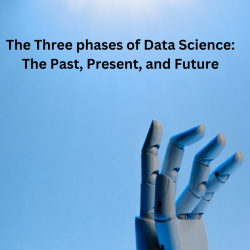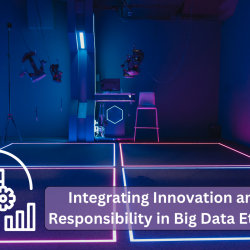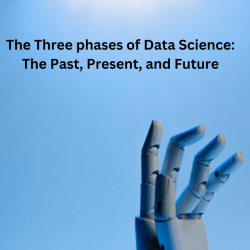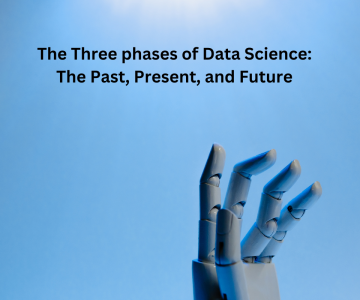How Data Analytics Might Help Solve Business Issues


Introduction to Data Analytics
In today’s fast-paced business landscape, companies are constantly facing an array of challenges and issues. Data analytics has emerged as a powerful tool that can help organizations tackle these problems effectively. From optimizing operations to staying competitive in a global market, businesses are under increasing pressure to make informed decisions quickly. Fortunately, In this article, we will explore how data analytics might help solve various business issues, demonstrating its transformative potential.
The Power of Data Analytics
Data analytics refers to the process of examining and interpreting data to extract valuable insights, patterns, and trends. It encompasses a range of techniques, including statistical analysis, data mining, predictive modeling, and machine learning. When applied effectively, data analytics can provide businesses with a competitive edge by enabling data-driven decision-making.
Here are some of the key ways in which data analytics can address common business challenges:
1. Enhancing Operational Efficiency
One of the foremost challenges that businesses encounter is optimizing their operations. This includes improving supply chain management, streamlining manufacturing processes, and reducing operational costs. Data analytics can play a pivotal role in achieving these objectives.
By analyzing historical and real-time data, organizations can identify inefficiencies and bottlenecks in their operations.
For example, a manufacturing company can use data analytics to monitor machine performance and predict maintenance needs, reducing downtime and improving overall efficiency. Similarly, retailers can optimize inventory management by analyzing sales data and demand patterns, ensuring that products are in stock when customers need them.
2. Improving Customer Insights and Personalization
Understanding customer behavior and preferences is crucial for businesses seeking to enhance customer satisfaction and loyalty. Data analytics enables companies to gather and analyze customer data from various sources, including social media, online transactions, and customer feedback.
By leveraging this data, businesses can create detailed customer profiles and segment their audience effectively. This, in turn, allows for personalized marketing campaigns and product recommendations.
3. Predictive Analytics for Forecasting
Predictive analytics is a branch of data analytics that uses historical data to make predictions about future events or trends. It is invaluable for businesses in various sectors, including finance, retail, and healthcare.
For example, financial institutions use predictive analytics to assess credit risk by analyzing borrowers’ credit histories and financial data. Retailers employ predictive analytics to forecast demand for products and optimize inventory levels.
4. Marketing Optimization
Marketing is a critical component of business success, and data analytics has revolutionized how companies approach it. Traditional marketing strategies often rely on trial and error, resulting in wasted resources and missed opportunities. Data analytics provides a data-driven approach to marketing, enabling organizations to allocate resources effectively and maximize the return on investment (ROI).
By analyzing customer behavior, response rates, and campaign performance metrics, businesses can refine their marketing strategies. This includes optimizing ad spend, identifying the most effective marketing channels, and tailoring messaging to specific audience segments. The result is a more efficient and impactful marketing effort.
5. Fraud Detection and Risk Management
For financial institutions and e-commerce companies, fraud detection is a significant concern. Fraudulent activities can lead to financial losses and damage to reputation. Data analytics, particularly machine learning algorithms, can be employed to detect anomalies and patterns indicative of fraudulent behavior.
By continuously monitoring transactions and user behavior, organizations can identify suspicious activities in real-time and take immediate action to mitigate risks.
6. Supply Chain Optimization
Supply chain management is a complex and multifaceted aspect of business operations. From procurement and logistics to inventory management, disruptions at any stage can have a ripple effect on the entire supply chain. Data analytics provides visibility into these processes and helps in optimizing them.
Through data analytics, organizations can track the movement of goods, monitor supplier performance, and assess the impact of external factors such as weather and geopolitical events.
7. Employee Productivity and Talent Management
Managing a skilled workforce is crucial for business success. Data analytics can assist in talent acquisition, retention, and performance management.
Recruitment can be streamlined by using analytics to identify the best sources for talent acquisition and assess the effectiveness of hiring strategies.
Moreover, analytics can provide insights into employee performance, helping organizations identify high-performing individuals and areas where additional training or resources may be needed.
8. Compliance and Risk Assessment
In industries heavily regulated by government agencies, compliance is not optional; it’s mandatory. Data analytics can help businesses ensure that they adhere to relevant regulations and mitigate compliance risks.
By analyzing data related to processes, transactions, and customer interactions, organizations can identify potential compliance issues and take corrective action proactively.
9. Market and Competitive Analysis
In a rapidly changing business environment, staying ahead of competitors is a constant challenge. Data analytics can provide businesses with a competitive advantage by analyzing market trends, consumer sentiment, and competitor strategies.
By monitoring social media conversations and sentiment analysis, organizations can gain insights into customer perceptions and emerging trends.
10. Product Development and Innovation
Successful product development requires a deep understanding of customer needs and preferences. Data analytics can inform the product development process by providing insights into market demand and customer feedback.
Businesses can use data analytics to track customer feedback and sentiment about existing products, allowing for iterative improvements. Moreover, predictive analytics can help identify potential areas for innovation and new product development, aligning offerings with evolving market demands.
Conclusion
In a world where data is generated at an unprecedented rate, businesses that harness the power of data analytics gain a significant advantage. The ability to transform data into actionable insights enables organizations to solve a wide range of business issues, from improving operational efficiency to enhancing customer satisfaction and making informed strategic decisions.
As the business landscape continues to evolve, data analytics will remain a vital asset for organizations seeking to thrive and remain agile in the face of challenges and opportunities. It is not merely a technology; it is a transformative force that empowers businesses to adapt, innovate, and succeed in a data-driven world.
You Can Also Read:
Data Science Course Manchester
Investment Banking Course Manchester
Full Stack Development Course Manchester






Ingen kommentarer endnu